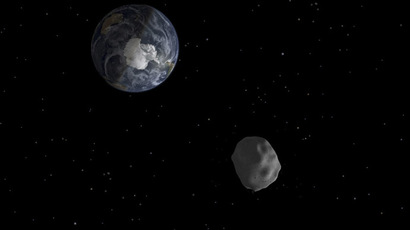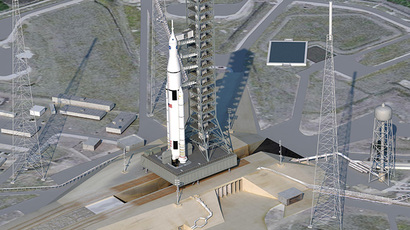‘Extra funds, no progress’: NASA watchdog slams asteroid-tracking program

NASA’s internal watchdog has criticized the agency for its lackluster management of a program intended to identify and monitor asteroids that could be potentially dangerous to Earth.
In a report on the space agency’s Near Earth Objects project – which tries to pinpoint comets and asteroids that pass through Earth’s vicinity and could one day pose a threat to the planet – NASA Inspector General Paul K. Martin said the program is nowhere near meeting its stated goal.
Initiated in 1998, the Near Earth Objects (NEO) program has identified more than 11,000 asteroids, comets, and large space rock fragments that measure bigger than 460 feet (140 meters) across. While that sounds like an impressive number, it only amounts to about 10 percent of NASA’s stated goal: to catalogue 90 percent of all near-Earth objects by 2020.
As a result, Martin said NASA will not meet its target goal by 2020 given the current obstacles.
The inspector general noted that the lack of progress comes even though NASA’s budget for the NEO program has increased significantly over the past five years. During fiscal year 2014, the program was granted $40 million by Congress. Previously, it was working with $4 million.
What’s more, the report found that most of the progress made in identifying asteroids was made before the program received a budgetary boost from lawmakers.
Specifically, Martin’s report highlighted a lack of structure, coordination and oversight for the program’s problems, and said NASA needs to do a better job of overseeing and evaluating the work performed.
"We believe the program would be more efficient, effective and transparent were it organized and managed in accordance with standard NASA research program requirements," the report reads.
In response, NASA's associate administrator for the science mission directorate, John Grunsfeld, said the agency agreed with the report’s recommendations and has already presented a schedule detailing its plans to implement them.
"NASA places a high priority on finding and characterizing hazardous asteroids to protect our home planet from them,” he said in a statement to NBC News. “NASA has aggressively developed strategies and plans with its partners in the US and abroad to detect, track and characterize NEOs and identify those that might pose a risk of Earth impact, and is developing options for planetary defense. As part of the agency’s overall asteroid initiative, we will act on the IG’s recommendations."














